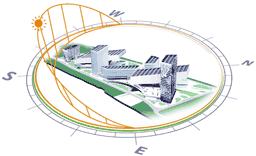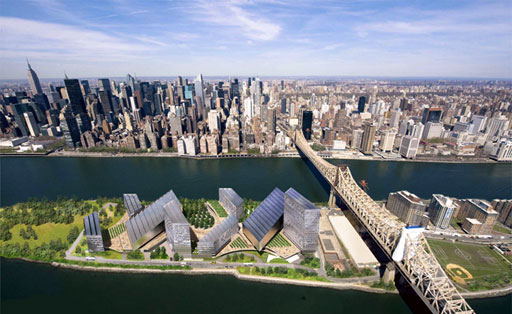(Architectural Record) – Cornell University topped the competition to build a new tech campus with an SOM design that aims to generate more energy than it uses.

- Cornell University topped the competition to build a new tech campus with an SOM design that aims to generate more energy than it uses.
According to Fred A. Bernstein of Architectural Record, it’s hard to know how much of a factor architecture was in the city’s choice of Cornell/Technion, given the Bloomberg Administration’s extensive focus on finances. And it isn’t yet known if SOM will design the project and its component buildings (intended to total 2 million square feet by 2043).
If Cornell and Technion follow through with SOM’s winning plan, the 400,000-square-foot first phase of the tech campus will also create as much energy as it uses. A solar array that will generate 1.8 megawatts at daily peak and a four-acre “deep earth” geothermal well field will provide heating and cooling and will also recharge fuel cells. According to Duffy, who tends to speak grandly – but in this reporter’s experience, delivers what he promises – the need to produce, and conserve, energy will affect every aspect of the design, with strictly formal considerations giving way to what he calls “a new aesthetic” of sustainability.

Renderings released by SOM show eight silver-coloured buildings arranged in a zigzag pattern on the south end of the island where a complex of hospital facilities currently stands. SOM’s buildings, which are meant to foster “impromptu meetings that lead to innovation,” Duffy says, will have large interior courtyards and will be linked by above-ground walkways. The firm’s history with such walkways has not been entirely positive. Back in the mid-1960s Walter Netsch of SOM’s Chicago office designed the new campus for the University of Illinois Chicago Circle, which was hailed in part for its extensive system of elevated pedestrian walkways. Thirty years later, the walkways, widely seen as a disaster, were torn down.

